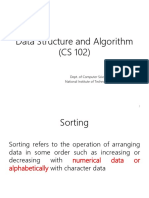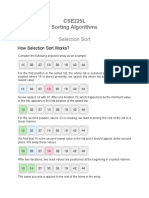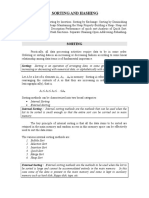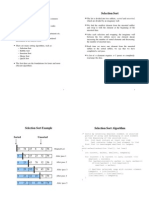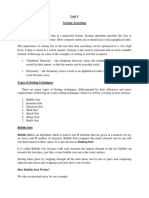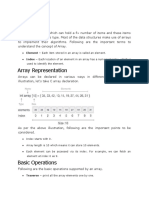0% found this document useful (0 votes)
157 views90 pages5 - Sorting Algorithms
The document describes the bubble sort algorithm. It works by repeatedly comparing adjacent elements and swapping them if they are in the wrong order, causing the largest elements to "bubble" to the end of the list. This process is repeated, each time stopping one element earlier, until the list is fully sorted after n-1 passes where n is the number of elements. An example is provided to illustrate the step-by-step process of bubble sorting a sample list of numbers.
Uploaded by
Shakir khanCopyright
© © All Rights Reserved
We take content rights seriously. If you suspect this is your content, claim it here.
Available Formats
Download as PPTX, PDF, TXT or read online on Scribd
0% found this document useful (0 votes)
157 views90 pages5 - Sorting Algorithms
The document describes the bubble sort algorithm. It works by repeatedly comparing adjacent elements and swapping them if they are in the wrong order, causing the largest elements to "bubble" to the end of the list. This process is repeated, each time stopping one element earlier, until the list is fully sorted after n-1 passes where n is the number of elements. An example is provided to illustrate the step-by-step process of bubble sorting a sample list of numbers.
Uploaded by
Shakir khanCopyright
© © All Rights Reserved
We take content rights seriously. If you suspect this is your content, claim it here.
Available Formats
Download as PPTX, PDF, TXT or read online on Scribd
/ 90
